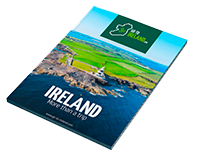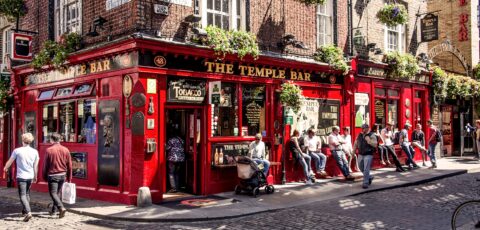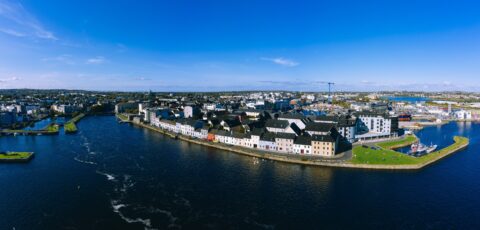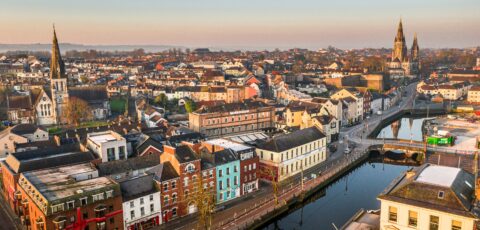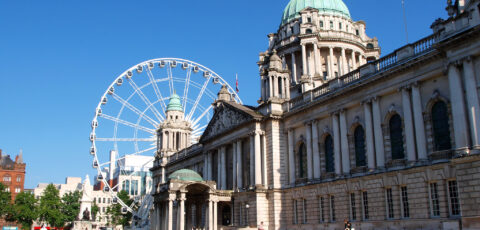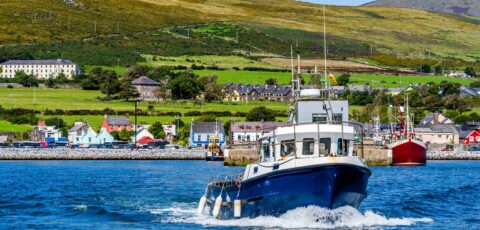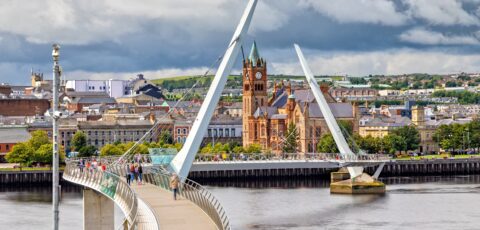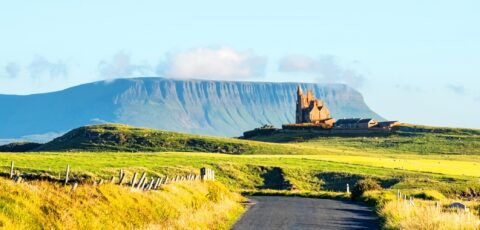Edward Bruce.
A look back at the history of Ireland's last king: a short-lived and fascinating reign.

Edward Bruce, often overshadowed by his brother Robert Bruce, King of Scotland, is an emblematic but often overlooked historical figure. His reign over Ireland was brief, from 1315 to 1318, but he left an indelible mark on Irish history.
Edward Bruce biography
The years of youth
Edward Bruce was born into a noble family in Scotland around 1280. He is the youngest son of Robert de Brus, 6th Lord of Annandale, and Marjorie, Countess of Carrick. At the time, the Bruce family had close ties with royalty, which no doubt fueled the Bruce brothers’ ambitions from an early age.
The fight for Scottish independence
The Bruce family were ardent supporters of Scottish independence, which brought them into conflict with the English crown. Edward Bruce played an important role in the first Scottish War of Independence, alongside his brother Robert Bruce.
He distinguished himself at the Battle of Bannockburn in 1314, a crucial victory for the Scots.
Irish ambitions

Edward Bruce’s battles in Ireland – © sam
Building on their success in Scotland, the Bruce brothers turned their attention to Ireland.
During this period, the Emerald Isle was divided into various kingdoms and lordships, often in conflict with one another. The Kingdom of England also exerted a growing influence over the Irish territory, attempting by all means to conquer every region.
Edward Bruce saw this instability as an opportunity to unify Ireland under a single crown.
Galvanized by his conquests in Scotland with his brother, Edward Bruce saw Ireland as yet another means of waging a bitter struggle against the English. He hopes to reproduce their Scottish victories on Irish soil, and be proclaimed King of Ireland. (Nothing less!).
He landed in Ireland in 1315 at the head of a Scottish and Irish army. He also found the support of many Irish lords and clans.
Backed by his troops, he led a campaign lasting over 3 years (known as the Bruce Invasion), designed to deliver Ireland from the English yoke.
quickly won several battles, creating a surprise on the English side:
The Battle of Connor
One of his first victories in Ireland was at the Battle of Connor in 1315. This battle is often cited as one of his greatest military successes. It enabled him to consolidate his hold on the north of Ireland and encourage more Irish lords to join his cause.
The Battle of Kells
Shortly after the victory at Connor, Bruce won another significant battle at Kells in County Meath. This victory strengthened his position and enabled him to push further south towards Dublin.
Other military successes
Bruce also enjoyed other successes on the battlefield, though less spectacular than the first. He succeeded in taking several forts and castles in Ireland, helping to extend his influence, even if this was often temporary.
It should be noted, however, that Edward Bruce’s victories were often short-lived. He was unable to capture Dublin, the capital, and his campaign in Ireland was weakened by the famine that was rampant at the time, as well as by lukewarm support from the local Irish lords.
Coronation in 1316… despite growing divisions
With the support of several Irish lords, and on the strength of his success in battle, Edward Bruce proclaimed himself King of Ireland in 1316.
However, he reigned over the Kingdom of Ireland for a very unstable period, marked by famines and internal conflicts. Although some of his initial victories were spectacular, he failed to consolidate his power or win the hearts of the Irish people as a whole.
What’s more, he failed to win the unanimous support of the Irish lords. For many, this Scotsman does not have the legitimacy to rule Ireland. This lack of cohesion contributed to its precipitous decline.
Death of Edward Bruce

Edward Bruce’s tomb – Davidmc5585 – cc
Although he tries to pacify the country, he is led to take part in other battles to unite the Kingdom.
And all his achievements were sadly wiped out when he was killed at the Battle of Faughart on October 14, 1318, near Dundalk. His death marked the end of his campaign in Ireland and of his ambitions to become sovereign of a unified Ireland.
He was officially the last High King of Ireland in the country’s history.
For example, his corpse was dismembered by the British. Some of its members are displayed above the gates of certain Irish towns to discourage any further attempts at revolt on the Irish side.
His head, meanwhile, was presented to King Edward II of England by the victor, John de Bermingham, an Anglo-Irish baron who led the battle of Faughart… and thus put an end to Bruce’s conquests.
This English victory signaled the end of the Irish king Edward Bruce… but also the prospects of emancipation for Ireland at the time.
Edward Bruce ruled Ireland for a particularly short time: just two years, making it one of the shortest reigns in Irish history!
The battles he won helped shape his legend. In history, he is portrayed as an able military leader with an ambitious vision for Ireland. Although controversial, his legacy as a warrior and aspiring king of Ireland continues to fuel debate and historical study.


 Travellers' notes
Travellers' notes

 4.61/5 (278 votes)
4.61/5 (278 votes) Type :
Type :



